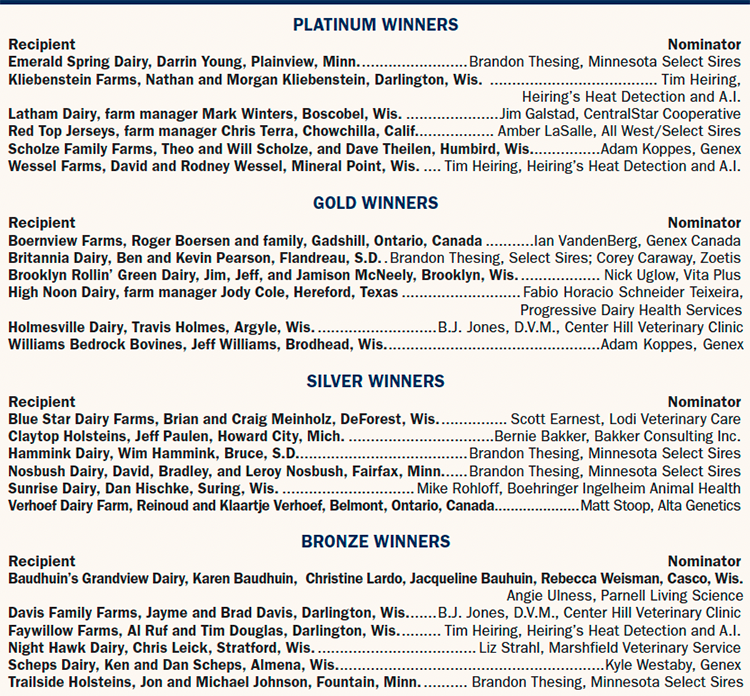Six herds sorted themselves to the very top of the pool of impressive entrants of the 14th annual Excellence in Dairy Reproduction Awards presented by the Dairy Cattle Reproduction Council (DCRC). This year, 98 farms were nominated from around the country and, in fact, around the world.
On the following pages, the Platinum winning herds share what has made this success possible on their farms and how they maintain reproductive efficiency. These operations represent a variety of herd sizes and breeds, but each emphasizes a commitment to detailed cow comfort, nutrition, and care throughout the lactating and dry periods. Combined with dedicated employees and proper synchronization protocols, animals can perform to their best ability.
All of this year’s Platinum herds recorded pregnancy rates at or above a remarkable 44%. However, the awards encompass far more detail. Earlier this year, a panel of judges blindly evaluated all 98 entries to identify 49 farms for a closer analysis. Those herds shared information on metrics such as culling, age at first calving, heat detection, breeding intervals, and conception rates by season and lactation. From there, the judges evaluated and ranked each farm, again without knowing the identity of the entries. Those rankings were compiled to award Platinum, Gold, Silver, and Bronze designations. Turn to page 678 to see the winners in the other categories.
When do you begin breeding?
Emerald Spring: Heifers are custom raised and have a voluntary waiting period (VWP) of 13.5 months. On cows, the VWP is 70 days. The first service on all cows is synchronized and occurs at 70 to 76 days in milk (DIM).
Kliebenstein: On cows, our VWP is 70 days. We’ll observe and record early heats leading up to Day 70. As a cow reaches 65 to 70 days, it is given prostaglandin. Any cow that isn’t bred off of that treatment is enrolled in ovsynch the next week.
For heifers, they are moved in groups to the breeding pen at around 13 months of age. The goal is for them to have their first service before passing 14 months of age.
Latham: Replacement heifers are intensely managed and aggressively fed for optimum growth from the time they are born. Therefore, most heifers are well framed and ready to be inseminated at 13.5 months of age. If a heifer is smaller framed, we usually wait an additional estrus cycle before insemination.
The VWP for cows is 80 days. Most cows are first inseminated around 87 DIM because of how our synchronization protocols are established.
Red Top: Cows are serviced 68 to 74 DIM via double ovsynch. Heifers enter the breeding pen at 11.5 months old and begin being serviced at 12 months old.
Scholze: With heifers, we begin watching for heats at 365 days. We’ll give Lutalyse (prostaglandin) if no heat has been observed by 377 days. If there’s still no heat by 400 days, they are culled. For cows, we use an 80-day VWP and enroll cows in a double ovsynch protocol. There is no “cherry-picking” of heats.
Wessel: Our VWP for cows is 80 days. We’ll begin breeding heifers at 14 months of age.

Do you use a presynchronization or synchronization protocol?
Emerald Spring: We use a double ovsynch protocol. All cows receive their first service on the second ovsynch. We do not resynchronize cows prior to pregnancy check, but we will give GnRH to cows checked open and enroll them in ovsynch. If there’s no corpus luteum (CL), they will also get a controlled internal drug release (CIDR) containing progesterone.
Kliebenstein: The majority of our first service cows are bred off of their presynch prostaglandin at 65 to 70 days. If they aren’t bred within that week, they are then enrolled in ovsynch.
During herd health, if a cow checks open and has a CL, we will administer prostaglandin. Ovsynch will be implemented if the cow is checked open and cystic.
No prebreeding or synch programs are currently implemented on heifers. All are bred off of natural heats. If a heifer is not showing heats, we will administer prostaglandin.
Latham: All cows receive prostaglandin between 46 to 52 DIM and again at 60 to 66 DIM.
Cows are enrolled into ovsynch-56 at 74 to 80 DIM. Pregnancy examinations are conducted every two weeks. Cows who have been inseminated 28 to 34 days will be resynched the week prior to pregnancy check.
Red Top: Cows are enrolled into double ovsynch to be bred at 68 to 74 DIM. Weekly pregnancy exams are conducted with ultrasound beginning at 32 days. Open cows are enrolled into one of two protocols. Cows with a CL are administered prostaglandin and observed for heat. Cows without a CL are enrolled into a 10-day ovsynch.
Scholze: We use a double ovsynch program with no presynch. All animals who don’t show a heat are enrolled in a resynchronization protocol prior to the vet check. The open cows continue with that and pregnant animals are withdrawn.
Wessel: If a cow hasn’t shown a heat by 50 days in milk, we will give prostaglandin. Most cows are on ovsynch with two treatments of prostaglandin. I’ll start them at 70 DIM so they’re ready to breed at 80 DIM.
If a cow is open after first breeding and has a CL, we will give prostaglandin. If no CL is palpated, we will start ovsynch. In hot weather, we will give GnRH one week before the pregnancy check.
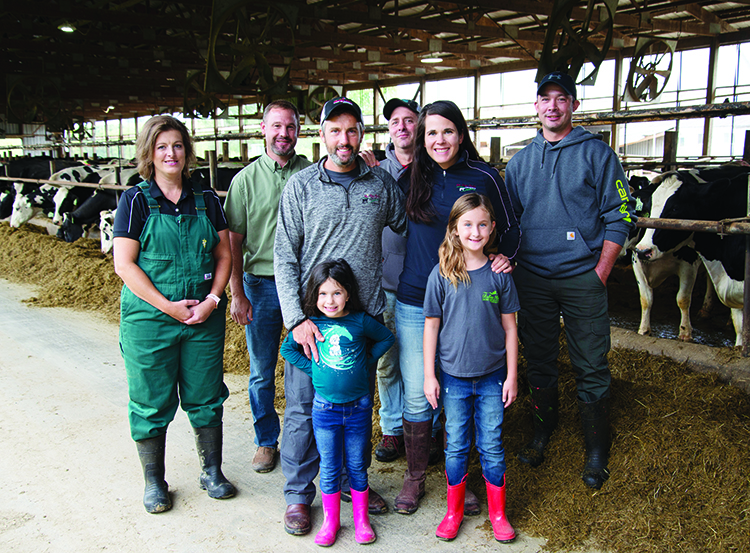
How are cows observed for heat?
Emerald Spring: After the first service, cows are visually observed for heat. Cows are put in headlocks once each day, and a technician uses tail paint to find cows that have been in heat. We only breed one time a day, so if a cow is in heat at that time, they are bred then.
Kliebenstein: Cows and heifers are both walked daily by our A.I. technician, Tim Heiring. We use tail paint and visual heat detection on both groups. Cows observed in heat are bred that day, along with anyone that is identified via tail paint in the past 24 hours.
Latham: The GEA pedometer system and use of daily tail chalking help us determine when cows are in heat. The replacement heifers are visually watched for heats, typically three times per day: early morning, noon, and evening. Ron Fossum, our heifer manager, lives at this location, and so heat detection is easier because of this convenience.
Red Top: After everything is timed bred on first service, heats are observed daily with tail chalk. Heifers are tail chalked daily, as well.
Scholze: Both cows and heifers are tail chalked, and we’ll breed when the paint is rubbed off. We breed cows between 5 a.m. and 7 a.m. and heifers around noon.
Wessel: All cows and heifers are tail painted by our A.I. technician, Tim Heiring. We also watch for any other signs like nervousness, bawling, or cows not milking out in the parlor. I (Dave) watch heats on both cows and heifers, and Tim also focuses on the cows. All animals are bred in the late morning.
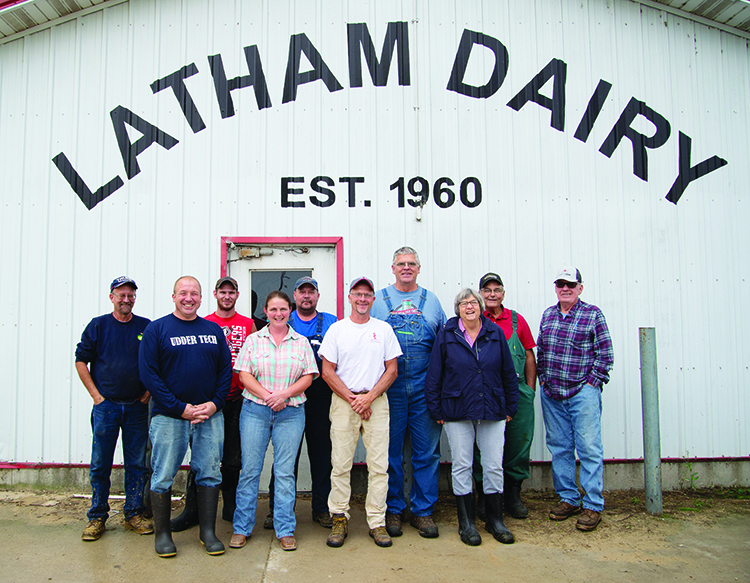
Do you use sexed dairy or beef semen?
Emerald Spring: We currently use a combination of sexed semen and beef semen. Eighty percent of heifers receive sexed semen, with the other 20% receiving beef semen. On the cows, about 70% of all breedings are to beef semen and 30% to sexed. We select which cows or heifers to mate to sexed semen based on parent average. Of the animals that are mated to receive sexed semen, heifers will get three chances with sexed semen, first-lactation animals get two chances, and older cows only get one.
Kliebenstein: Heifers are bred to sexed semen on their first service. Beef semen is used on heifers at third service and later, first-lactation cows at second service and later, and second-lactation and older cows at first service and later.
Latham: Virgin heifers are inseminated once with sexed semen. If they return to estrus, conventional semen is used on subsequent inseminations. Approximately the top 75% of first-lactation cows are inseminated initially with sexed semen before switching to conventional semen on any returns. Only 10% of second lactation or greater cows will receive sexed semen. In order to prevent excess heifers from being created, a high percentage of the herd is inseminated with beef semen.
Red Top: All of our heifers are bred to sexed semen for three services; then they get two services of conventional Jersey semen.
The top 25% to 30% of the cows — based on performance and genetics — are hand selected and mated to receive sexed Jersey semen for the first two services, then beef semen. The remaining 65% to 70% of cows receive beef semen beginning at first service.
Scholze: All virgin heifers get sexed semen, and all first and second lactation cows do, too. All cows third lactation and older get beef semen.
Wessel: We hadn’t used very much sexed semen in the past but have stepped it up in recent years so that roughly 70% of our heifers are now bred with sexed semen. We use beef semen on about the bottom quarter of the milking herd and the lowest 10% to 20% of heifers, based on genomic testing results.
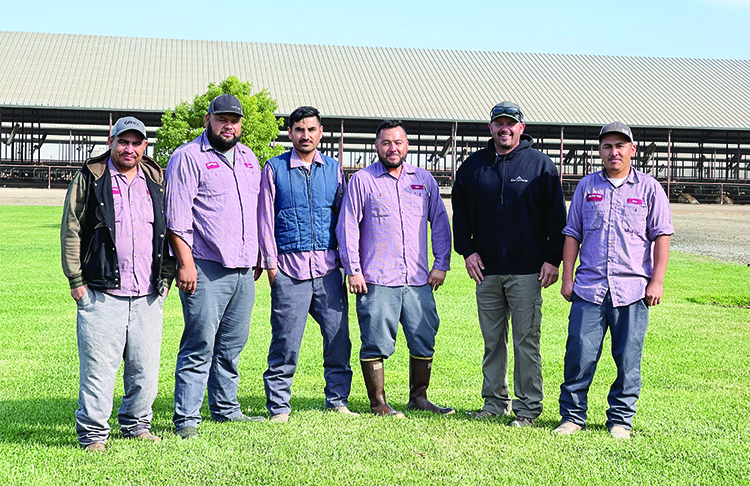
What emphasis do you put on selecting for fertility traits?
Emerald Spring: We try to avoid bulls with a very low daughter pregnancy rate (DPR) and sire conception rate (SCR). We don’t put a lot of emphasis on fertility traits, but we do look at indices like NM$ and DWP$ that take some of them into consideration. We look at conception rates of sires we are using each quarter and will replace bulls that are performing poorly in our herd.
Kliebenstein: We establish criteria for DPR, NM$, and Total Performance Index (TPI) in regards to fertility. We use mostly genomic sires, so there is usually not much fertility data on their conceptions rates.
Latham: Great emphasis is placed on selecting for high fertility. I (Mark) have been handpicking sires for use in the herd matings since I was hired. Twenty years ago, I first learned about the negative effects that haplotypes could create on pregnancy rates. I eliminated any carrier sires from our matings.
Eventually, genomic predictions became available for fertility traits. This tool made it easier to focus on fertility. Genomic predictions related to sire conception rates, heifer conception rates, cow conception rates, and daughter pregnancy rates are all reviewed before selecting sires to be used for herd replacements. Sire conception rates are reviewed for beef bulls, too. When we were genetically testing females, they were culled as calves if they had significantly low fertility predictions.
Red Top: In years past, I would use DPR as a selection criteria when mating the cows and was very critical for DPR when selecting bulls, as well. I still look at DPR when mating cows, but we have been around 40% pregnancy rate for the past several years now, so I’m not nearly as critical as I once was. The Jersey breed, in general, has also improved for DPR, so I am not forced to be as critical with the bulls either. There is a wider variety of elite bulls in the breed to choose from that have a positive or at least neutral DPR.
Scholze: Fertility traits are inherently part of our mating process since we use all sexed semen. Typically, higher fertility bulls are what is used for sexed semen.
Wessel: We watch DPR of our service sires closely. When evaluating cows, we will check its family history, sire’s fertility rates, and past conception and pregnancy rates.
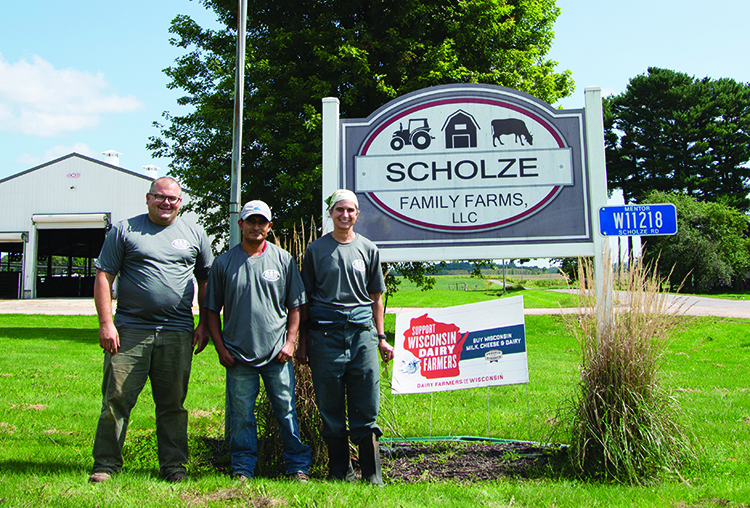
How do you handle problem cows?
Emerald Spring: We don’t have a hard and fast rule regarding “do not breed” (DNB) cows. Most cows that are not pregnant by 200 DIM will be considered DNBs. Also, cows bred five or more times would be candidates. Other factors are considered as well, such as low production, high SCC, and poor feet and legs. Currently, 4% of our herd is DNB.
Kliebenstein: Any animal that does not settle in the first five services is flagged as a DNB. Cows that don’t show heats, are cystic, or have silent heats are given prostaglandin and/or set up for ovsynch.
Latham: When cows are determined to be cystic, a progesterone CIDR will be incorporated into the synchronization program. I typically will only give a cow or a heifer four chances to conceive. After that point, open animals are moved to the DNB list. I do not reward poor fertility by giving unlimited chances to become pregnant. High-production animals may be given some leniency. Once a cow has fallen below 100 pounds, I typically will discontinue inseminating it.
Red Top: One of the inadvertent results to elite reproduction is that you have very few problem cows. With a herd average of 93 days open, there aren’t many cows that become problems. I do not have a baseline DNB criteria. It is based on the individual, but there aren’t many that will be serviced after 200 DIM.
Scholze: We will cull after three unsuccessful breedings. Poor feet and legs, udder, or personality will also get a cow on the DNB list.
Wessel: Each cow’s situation is evaluated individually. In general, a cow in the bottom half of the herd is marked DNB if it reaches 150 DIM and is open. For cows in the higher end of the herd, that’s extended to 200 DIM. Still, there are always exceptions to this.
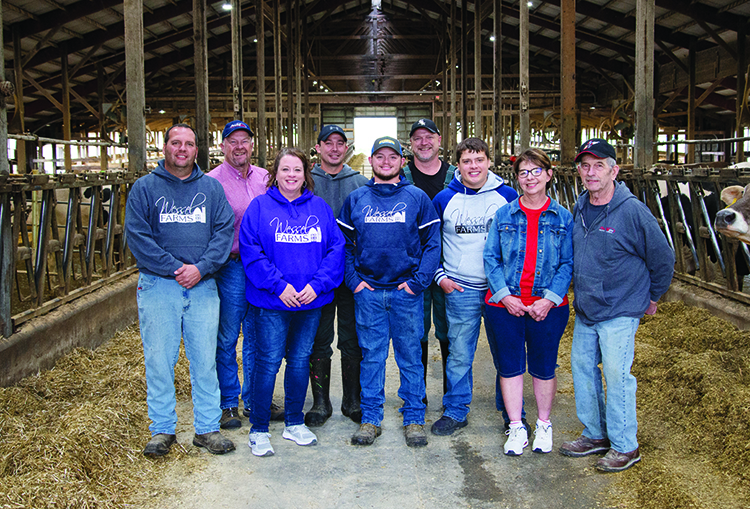
Describe your pregnancy checks.
Emerald Spring: We use ultrasound at 32 to 38 days after breeding. Open cows with a CL are given GnRH and enrolled in ovsynch. Cows without a CL are treated the same way, with the addition of a CIDR implant. Pregnant cows are rechecked at around 60 days after breeding and again one to two weeks prior to dry-off.
Kliebenstein: Herd health check takes place every three weeks. Animals greater than 28 days bred are checked. Those found pregnant are rechecked again at 60-plus days. An ultrasound is used to provide more detail on ovarian structures or statuses, and open cows are dealt with according to what their ovarian status is. For example, cows with a good CL are given prostaglandin, cystic cows are set up on ovsynch, and so forth.
Latham: Bi-weekly pregnancy exams occur. Many cows are either 32 or 39 days inseminated on pregnancy exam day because of synchronization protocols. Cows that are in the lower days pregnant range of 28 to 34 days will get rechecked two weeks later to ensure they have not experienced early embryonic death. Cows that were serviced 35 to 41 days are not rechecked. All cows will have a pregnancy confirmation check from 100 to 113 days carried calf.
Red Top: Cows are checked via ultrasound weekly from 32 to 38 days. Heifers are diagnosed with a blood pregnancy test.
Scholze: We ultrasound at 32 days. We will also recheck with ultrasound at 96 and 170 days carried calf.
Wessel: Our veterinarian, Matt Byers, comes to pregnancy check every other week on cows that are over 30 days since A.I. Open cows are given prostaglandin if they have a CL; if not, they start ovsynch. If a cow is detected with twins, it will be rechecked after at least 60 days post-A.I.
Describe your record system and analysis.
Emerald Spring: All of the cow data is entered into Dairy Comp 305. The breeding technicians enter breedings daily, and the herdsman enters pregnancy check results each week. Our veterinarian and nutritionist both are involved in evaluating data. Pregnancy rate and conception rate are the two metrics we look at most frequently.
Kliebenstein: We use AgSource DM as our herd management software. Tim will enter breedings and observed early heats daily. Nate will enter calvings and herd health results transferred from record sheets maintained in the barn office bi-weekly. Our nutritionist, Mike Van Schyndle, will evaluate the data along with Tim and Nate on a monthly basis. Calving interval, days to first service, pregnancy rate, and first service conception rate are all monitored.
Latham: Dairy Comp 305 is our primary herd management software. I am solely responsible for entry of data into the software system. However, all staff members are expected to record pertinent information immediately upon any significant event that occurs such as calvings, visual heats, lameness, other health status changes, and such. Clipboards for paper record keeping are common. Depending on what type of data is being tracked, some are entered daily and other events may only be entered weekly. Calving and breeding information is typically entered daily. Entering this data while it is fresh in one’s mind helps to catch and eliminate errors. Normally, I will analyze the reproductive performance of the herd from the analytics available on Dairy Comp 305.
I monitor all aspects of herd management because, directly or indirectly, it will eventually impact reproductive performance. Specifically, I start with SCR. Before I begin to inseminate cows, I want to know that I am using sires with acceptable conception ratings. If genomic sires are being used, I will closely monitor individual SCR and discontinue using a sire if its services per conception are poor.
Following inseminator performance and making sure that everyone has good technique is important to our success. This is followed as services per conception and can be easily tracked if properly recorded in Dairy Comp 305.
Pregnancy rate is probably the next most important metric. This comes from a combination of two factors: insemination rate and conception rate. Insemination rate is a measurement of how many cows are available or needing to be bred and how many get serviced. Essentially this comes down to estrus detection or utilizing timed A.I. Conception rates can be affected by so many variables. Therefore, sound herd management is critical.
In addition to our herd software, CentralStar breeding cooperative offers reproductive performance reports as a service to their patrons. Parnell Pharmaceuticals and Zoetis offer similar analysis for their customers, too. So, if you are lacking time or proficiency at the records analysis, don’t hesitate to ask for help.
Red Top: We use Dairy Comp 305 for all record keeping. Breedings are entered daily by the breeders. Herd health and reproduction exams are entered cowside using Pocket Cow Card from VAS and is then exported to Dairy Comp 305.
Metrics like which cows were open at vet check and percentage pregnant at vet check are monitored weekly to try to catch any issues as they arise. Pregnancy rate, days open, and percentage open after 150 days are monitored monthly. A key metric to maintaining elite reproduction is to monitor individual bull fertility in your herd and remove any bull that is below average for that time period as soon as possible.
Scholze: Jean Sylla, our herd manager, is responsible for entering data into Dairy Comp 305 daily. We evaluate this information bi-annually with our bank, nutritionist, heifer grower, and genetics team. We follow pregnancy rate and conception rate at first service most closely. Adjustments are made to accommodate changes that may need to occur.
Wessel: All heat, breeding, and pregnancy data is entered in Dairy Comp 305 by me or Tim. We both use the information, as well as Rod, Dr. Byers, and our nutritionist, James Bailey. We use our records to mostly monitor the number of times a cow has been bred and its breeding interval. It’s also used to keep track of which protocol was used on each cow, since not every one gets ovsynch.
How do you manage dry and fresh cows?
Emerald Spring: Our dry cows are housed in sand-bedded freestalls with fans and sprinklers for heat abatement. We have two groups of dry cows (far-off and prefresh) with different rations. Cows are moved to the prefresh group three weeks prior to calving.
Most fresh cows are given one to two calcium boluses after calving. We blood test to identify animals with ketosis. Fresh cows and heifers stay in a fresh pen for seven to 14 days prior to being moved to a larger lactating pen.
Kliebenstein: Dry cow body condition is closely monitored by our nutritionist; we aim to keep the dry cows at or around an average body condition score (BCS) of 3.8. Access to pasture is allowed during warm weather to encourage exercise.
Upon calving, all cows are given probiotics/yeast, free-choice YMCP, Inforce 3, and are closely monitored during their first week of lactation.
Latham: Dry cows are fed a single group, low energy, negative dietary cation-anion difference (DCAD) diet. Dry matter intakes are tracked. Urine pH is monitored. When dry cow nutrition is well managed and timely diet tweaks occur, we have minimal problems with transition cows. We have very few displaced abomasums (DAs) or milk fevers. Ketosis is almost nonexistent in our herd. Retained placentas, while typically low, are usually the best indicator that our dry cow diet may need an adjustment. I cannot stress enough how important I believe dry cow nutrition is to our total success.
Fresh cows are monitored daily for seven to 10 days after calving and given appropriate supportive care. We do not have a space that can be allocated to just postfresh cows and heifers, so we put our fresh cows and heifers into the lactating heifer group after calving. Mature cows are moved out after seven to 10 days, and the fresh heifers remain with their age group.
Red Top: We focus on managing the stress that is inevitable around calving. Much of what happens during the transition period has a direct impact on the immune system. Anything we can do to minimize energy being used by the immune system yields better breeding. Overcrowding is avoided to the extent possible.
The nutrition program for prefresh cows is a negative DCAD diet with elevated vitamin, protein, and fatty acid amounts due to reduced intake during this period. It is similar for fresh cows, except for the switch to a positive DCAD ration.
Scholze: Our nutritionist designs our total mixed ration (TMR), and feed is sampled every other week. This applies to dry, prefresh, and fresh cows. Having distinct dry and prefresh groups is the most important tool for us.
Wessel: All cows get ScourGuard 4K and are hoof trimmed before they go dry. Far-off cows are housed in a barn next to the lactating herd, and close-up cows move to the same barn as the milking cows. Both groups of dry cows are fed the same TMR, formulated by our nutritionist. Urine pH is tested weekly.
How might you improve reproduction?
Emerald Spring: We do not do any genomic testing currently. This could help us better identify which animals we should be targeting to breed to sexed or beef semen.
Kliebenstein: Currently, our lactating cows are all in one single group due to limitations of the barn’s setup and cow flow. Our long-term goal would be to add on a pen specifically for fresh cows ranging from zero to 30 days in milk. We currently have herd health check every three weeks; eventually, we’d like to conduct them bi-weekly. We are a small enough herd that visual observation and tail paint works really well for us, so at this time, we don’t see a huge need to invest in monitoring systems. We are also considering moving our VWP back to 80 days.
Latham: Since our herd has recently dispersed, I can only give advice as to what I think are the most important aspects of a reproductive program. First, I know it is critical to have conscientious people carefully executing timed A.I. protocols, performing heat detection, and being proficient at inseminating cows. We had a very low employee turnover rate, and this has been a critical aspect of how we have been able to build the herd and success we have. I cannot stress enough how important it is to foster new employees and show appreciation to them.
I firmly believe that total cow wellness, sound nutrition, foot health, heat abatement, stall comfort, intense genetic selection, and conscientious staff have all contributed equally to our success. No one thing by itself will yield perfect results. It is a combination of many things that need to happen for the good of the cow. When we take good care of the cow, it will be healthier, yield more milk, and become pregnant in a more timely manner. What it really boils down to for me as a dairyman is that I have to be willing to spend time with the cows or to foster people so that they can work with the cows.
Red Top: We have been successful in maintaining around a 40% pregnancy rate for over four years now, so the goal is to maintain this number while maximizing efficiencies.
Scholze: We may focus a little more on production. We have worked hard to improve fertility and body type, so we may need to steer a bit more toward production now.
Wessel: We don’t have any plans to change things right now.
What insights do you have for others?
Emerald Spring: We try to provide the cows with a comfortable and consistent environment in everything we do. This would include things like cow handling, stall management, feed delivery times, ration formulation, milking routine, and heat abatement. When we do these things well, reproductive success follows, and it makes everything else much easier to manage.
Kliebenstein: Our smaller size is a huge advantage to our success. Nate milks every day and knows the cows and their individual status very well. For example, he knows who is coming into heat, who is overdue for a heat, who should be pregnant but is standing to be ridden, and such. It allows us to really have multiple checks and balances for each cow and its events.
We put a major emphasis on cow health and cow comfort and the role they play in reproductive efficiencies. Those elements also really come through in our udder health parameters; we almost always average under 50,000 for somatic cell count (SCC). Additionally, our nutrition program is set up to maximize efficiencies without pushing cow production in a way that would begin to sacrifice health and reproduction.
Latham: The goal is to avoid problem cows. Our reproductive and productive success comes from focusing on cow wellness. This starts with sound dry cow nutrition that allows cows to freshen and transition into high milk production with minimal metabolic disorders. Cow wellness continues through stall comfort, heat abatement, proper management of feedstuffs, good ventilation, timely vaccination protocols, and proper hoof care. If you are aspiring to be a good dairyman, you must address lameness immediately. Lameness robs every dairy of profitability and is highly detrimental to reproduction.
I cannot stress enough that our success and cow wellness is a team effort. The focus must be on the cow and its well-being.
Red Top: Speaking from experience, don’t be afraid to try something that you may have tried in the past unsuccessfully. Herd profile, labor, and our wisdom to apply systems change every day. Just because something may not have been successful five years ago doesn’t mean that it won’t work today.
Scholze: Find a program that fits the personality of your farm. I personally prefer a walk and chalk/activity monitoring system to breed on natural heats and use less hormones. However, our staff works better with set protocols rather than observing and interpreting, so we go with what is preferred by the majority. Also the input of the herd manager is vital. He or she is running the program, so they need to be on board.
Wessel: Reproductive success starts when a cow calves; really, it starts even before then when a cow is in its dry period. From there, everything can fall into place.
